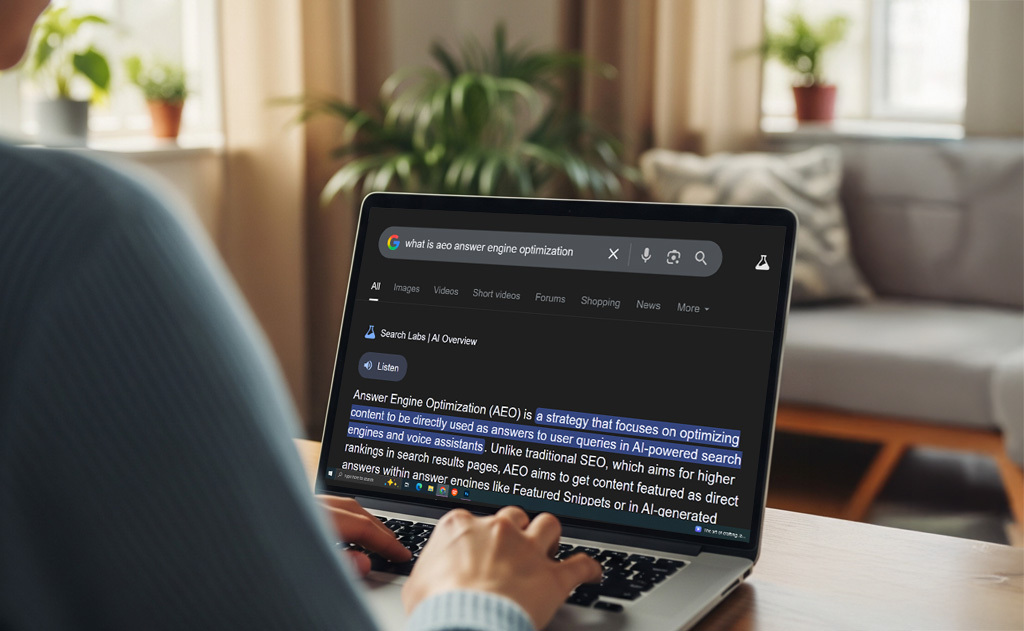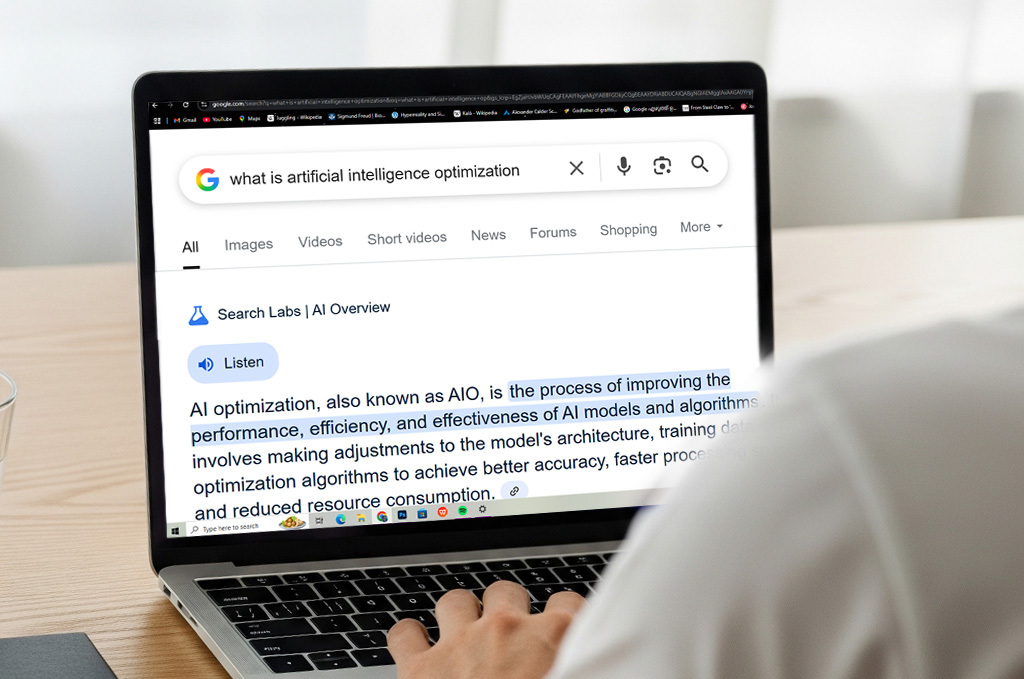
What is AEO? A Guide to Optimizing Your Website for the Future of Search
In today’s fast-paced digital world, users expect quick and accurate answers to their queries. Traditional SEO, while still important, is no longer enough to meet the demands of evolving search behavior. Search engines and AI-driven technologies are shifting their focus toward delivering direct, concise answers rather than simply listing web pages.
This shift has given rise to Answer Engine Optimization (AEO) — a strategy designed to position your content as the go-to source for immediate answers. In this blog, we’ll explore what AEO is, why it matters, and how you can optimize your website to stay ahead in the future of search.
What is Answer Engine Optimization (AEO)?
Answer Engine Optimization (AEO) is the process of structuring your content to directly answer users’ questions, making it easier for search engines, voice assistants, and AI tools to extract and present your content as a direct response.
While traditional SEO focuses on ranking full pages based on keywords, AEO focuses on ensuring that your content is selected to provide immediate, accurate answers.
You often see AEO in action through:
- Featured snippets on Google
- Voice search results on Alexa, Siri, and Google Assistant
- AI-driven answers in platforms like Google SGE or ChatGPT
By optimizing for AEO, you not only improve your visibility but also establish authority by delivering instant value to users.
Why AEO Matters
The Shift in User Behavior
Modern users want fast, reliable information. With the rise of voice searches and conversational AI, people increasingly prefer direct answers over browsing through multiple web pages.
The Rise of Voice and AI Search
Voice assistants and AI platforms rely heavily on pulling quick, structured answers from reliable sources. AEO ensures your content is among the chosen few.
Benefits of AEO
-
- Increased Visibility: Being featured as a direct answer puts you at the top of search results.
- Higher Trust and Authority: Quick answers build brand credibility.
- Improved Click-Through Rates: Users are more likely to visit trusted sources that provide helpful information immediately.
- Enhanced User Experience : AEO naturally leads to creating clearer, more structured, and more helpful content, which improves the overall user experience.
- Better Adaptation to Voice and AI Search : As voice search and AI-driven query responses grow in popularity, AEO positions your content to be read aloud by voice assistants or featured in AI-generated search results.
How AEO Works
Answer Engine Optimization (AEO) focuses on helping search engines and AI systems easily identify, extract, and display the best possible answer to a user’s query. Unlike traditional SEO, where the goal is to rank a web page highly, AEO’s goal is to position a specific piece of information from your content as the most accurate and relevant answer.
Here’s how it works:
- Understanding the User Intent: Search engines analyze the user’s query to determine what kind of answer is expected — a definition, a step-by-step guide, a list, or a simple fact. Content optimized for AEO is structured in a way that directly addresses that intent.
- Extracting the Best Match: Search engines scan through billions of web pages to find the clearest and most relevant answer. They prefer content that is well-organized, easy to understand, and authoritative.
- Highlighting Structured Content: When your content uses structured data like FAQ schema, How-To schema, or Q&A schema, it becomes easier for search engines to recognize the exact piece of information that answers the question.
- Displaying the Answer: Once identified, the answer is displayed in a special format such as a featured snippet, a knowledge panel, or read aloud through a voice assistant. Often, users get their answers without even clicking through to the website, making the quality and clarity of your content more important than ever.
Key AEO Optimization Techniques
a. Target Question-Based Queries
Focus on creating content that answers common user questions. Use tools like “People Also Ask” on Google or AnswerThePublic to find popular queries in your niche.
b. Provide Clear, Concise Answers
Aim to deliver the answer in the first 40–60 words of your content. Follow it with a deeper explanation if needed.
c. Implement Structured Data Markup
Use FAQ, HowTo, or Q&A schema to help search engines understand and categorize your content efficiently.
d. Optimize for Voice Search
Write in a conversational tone. Voice searches tend to use natural language, so match your content accordingly.
e. Create FAQ Sections and Knowledge Content
Building a robust FAQ page or knowledge base increases the chances of your content being picked for featured snippets or voice responses.
f. Enhance Page Speed and Mobile Experience
Since many users search via mobile devices and voice assistants, ensure your website is fast, responsive, and mobile-friendly.
AEO vs SEO: Key Differences
| Aspect | SEO | AEO |
| Focus | Keyword-based | Intent and question-based |
| Goal | Rank full pages | Deliver quick, direct answers |
| Strategy | Link building, on-page optimization | Structured content, concise responses |
| User Experience | User navigates to find answers | User receives instant answers |
While SEO and AEO work hand-in-hand, AEO places a stronger emphasis on understanding and directly fulfilling user intent.
Tools & Resources for AEO
Here are some essential tools to support your AEO strategy:
- AnswerThePublic: Discover popular user questions.
- AlsoAsked: Visualize related questions users are searching.
- Google’s “People Also Ask”: Identify trending question queries.
- Schema Markup Generators: Easily create structured data markup.
- Google Search Console: Monitor and track featured snippet performance.
Leveraging these tools can significantly improve your content’s chances of being selected as an answer source.
Common Mistakes to Avoid
- Ignoring Structured Data: Without schema markup, search engines might struggle to interpret your content.
- Overcomplicating Answers: Keep it simple and to the point.
- Not Targeting Conversational Queries: Voice searches demand natural, everyday language.
- Focusing Only on Keywords: User intent is more important than simply matching keywords.
Avoiding these common mistakes ensures your AEO strategy is effective and future-proof.
Conclusion
The future of search is about providing direct, accurate answers — and Answer Engine Optimization is the key to achieving that visibility. By embracing AEO, you position your brand at the forefront of search engines, voice assistants, and AI-driven platforms.
Optimizing for AEO does not replace traditional SEO; it enhances it. AEO focuses on answering user questions quickly, building trust, and capturing new opportunities in an increasingly competitive search environment.
Start today: audit your existing content, identify key user questions, and restructure your pages with clear answers and structured data. With a thoughtful AEO strategy, your website can become the go-to resource for users — and search engines — in the digital age.




